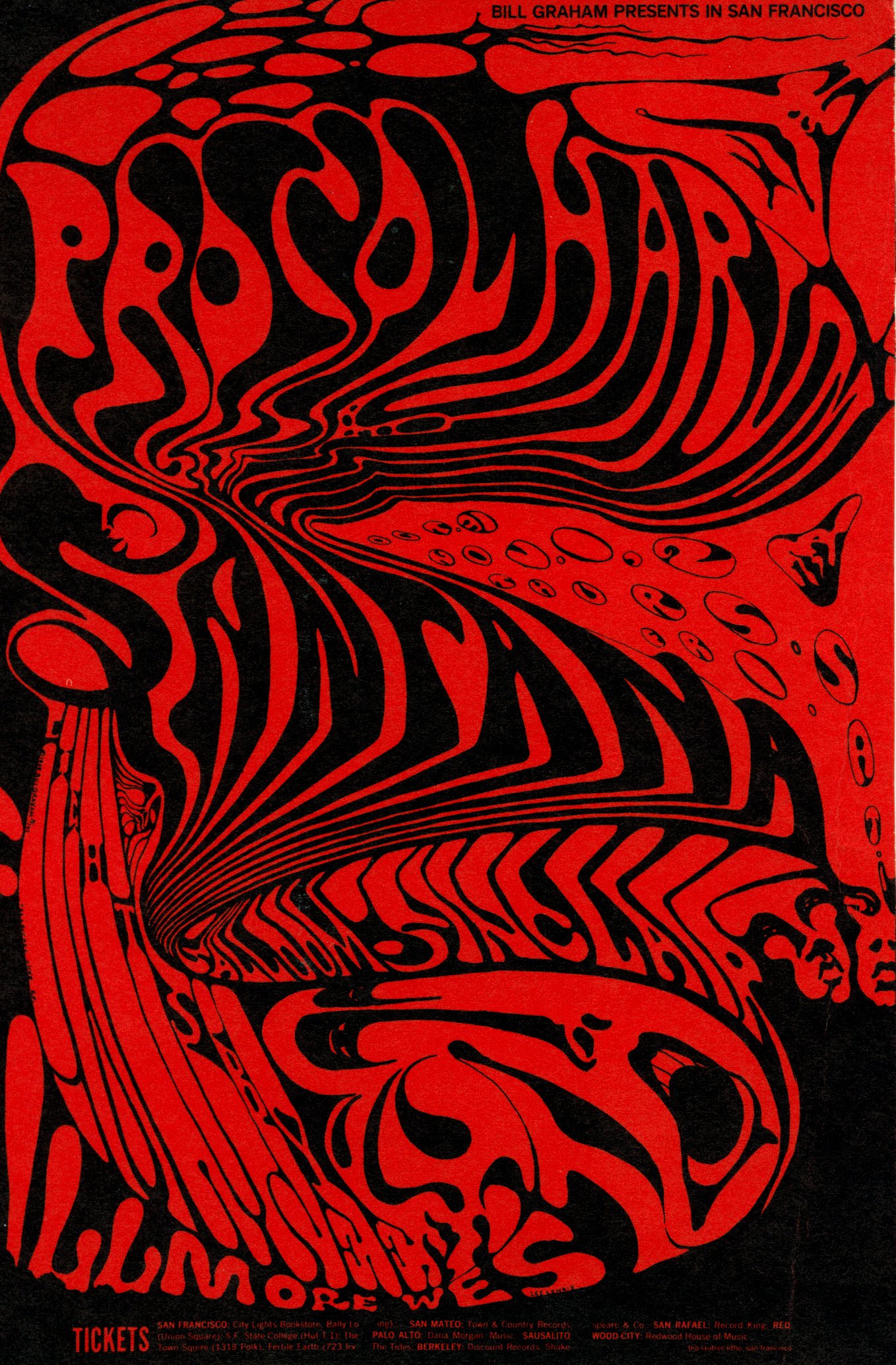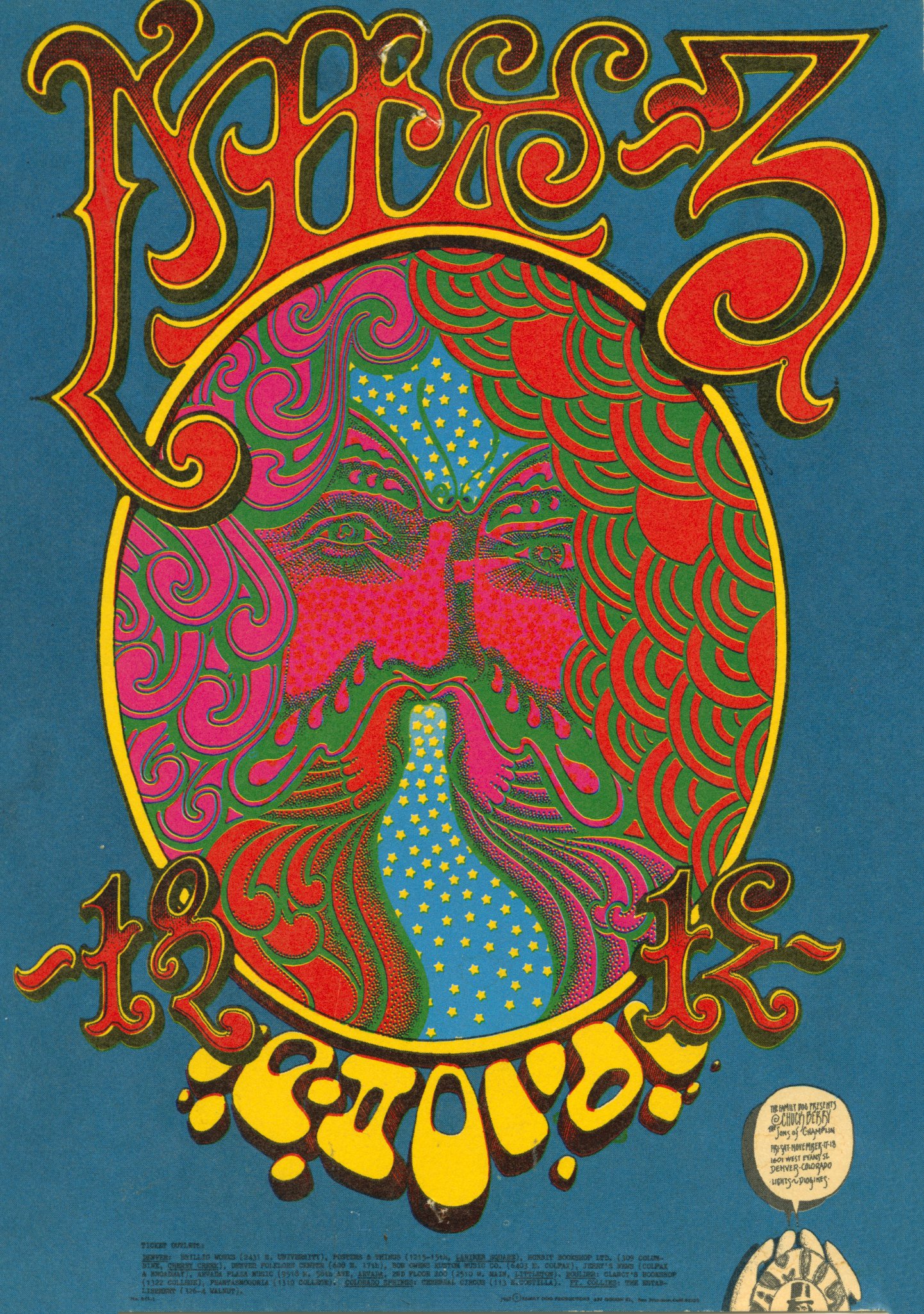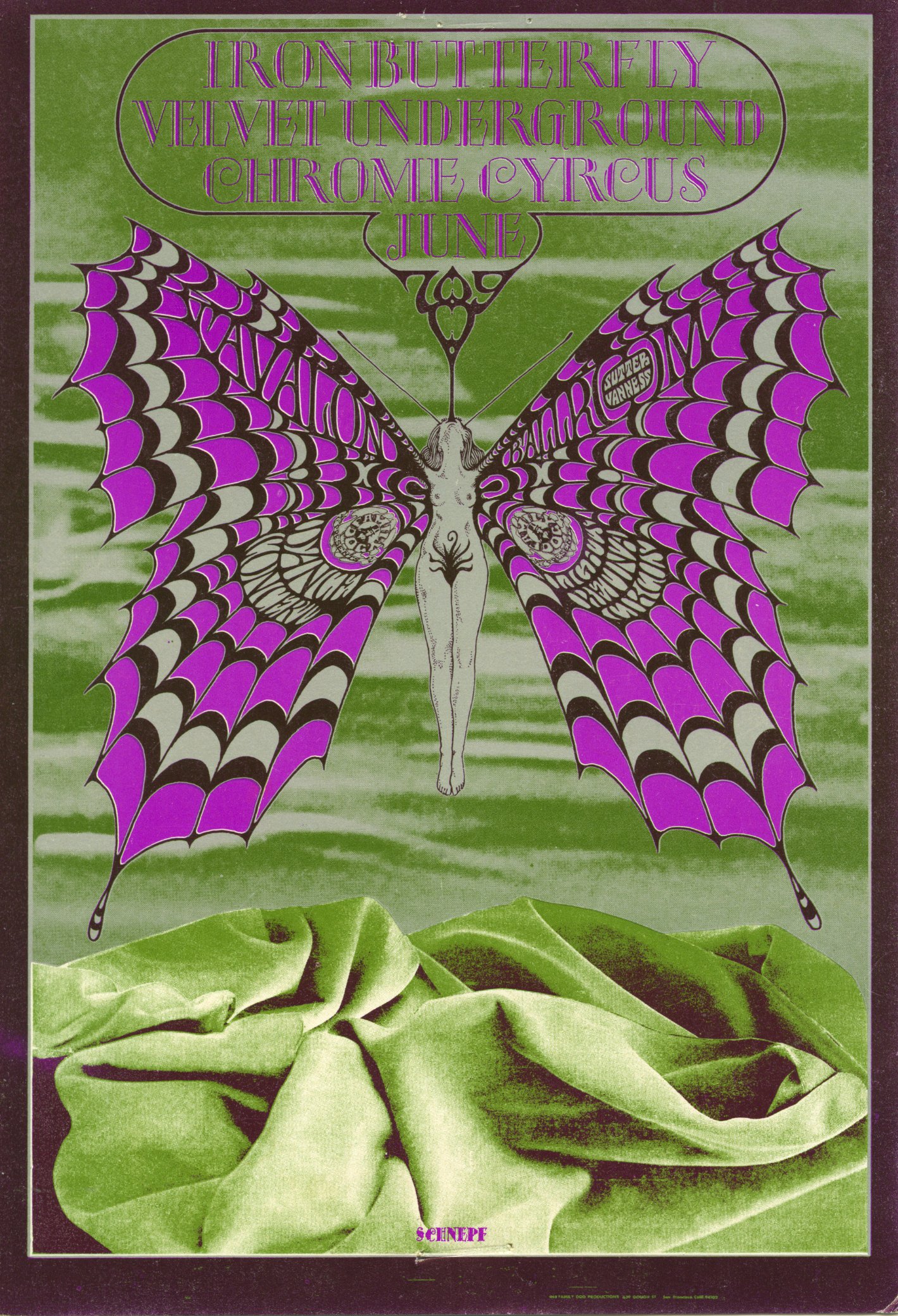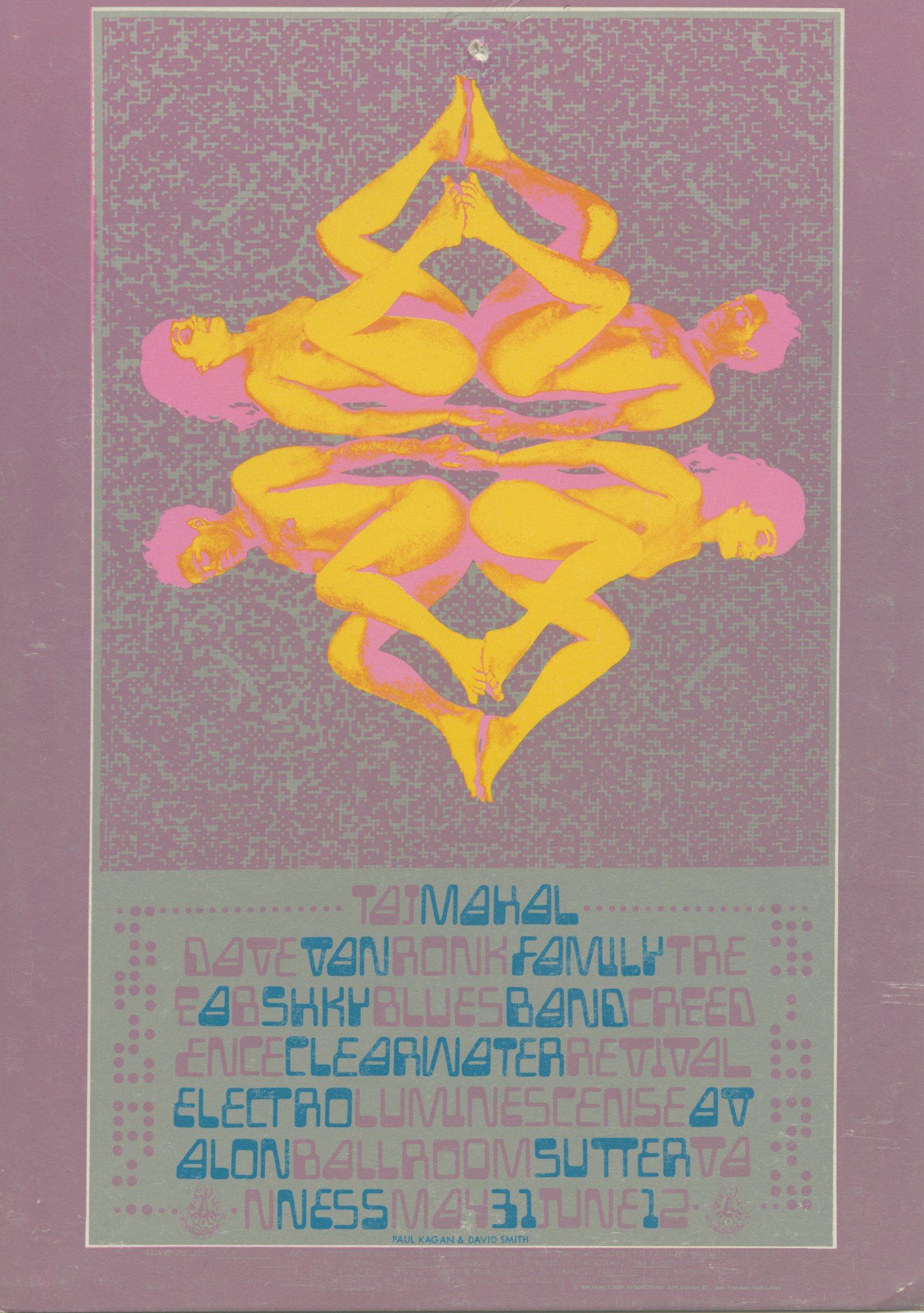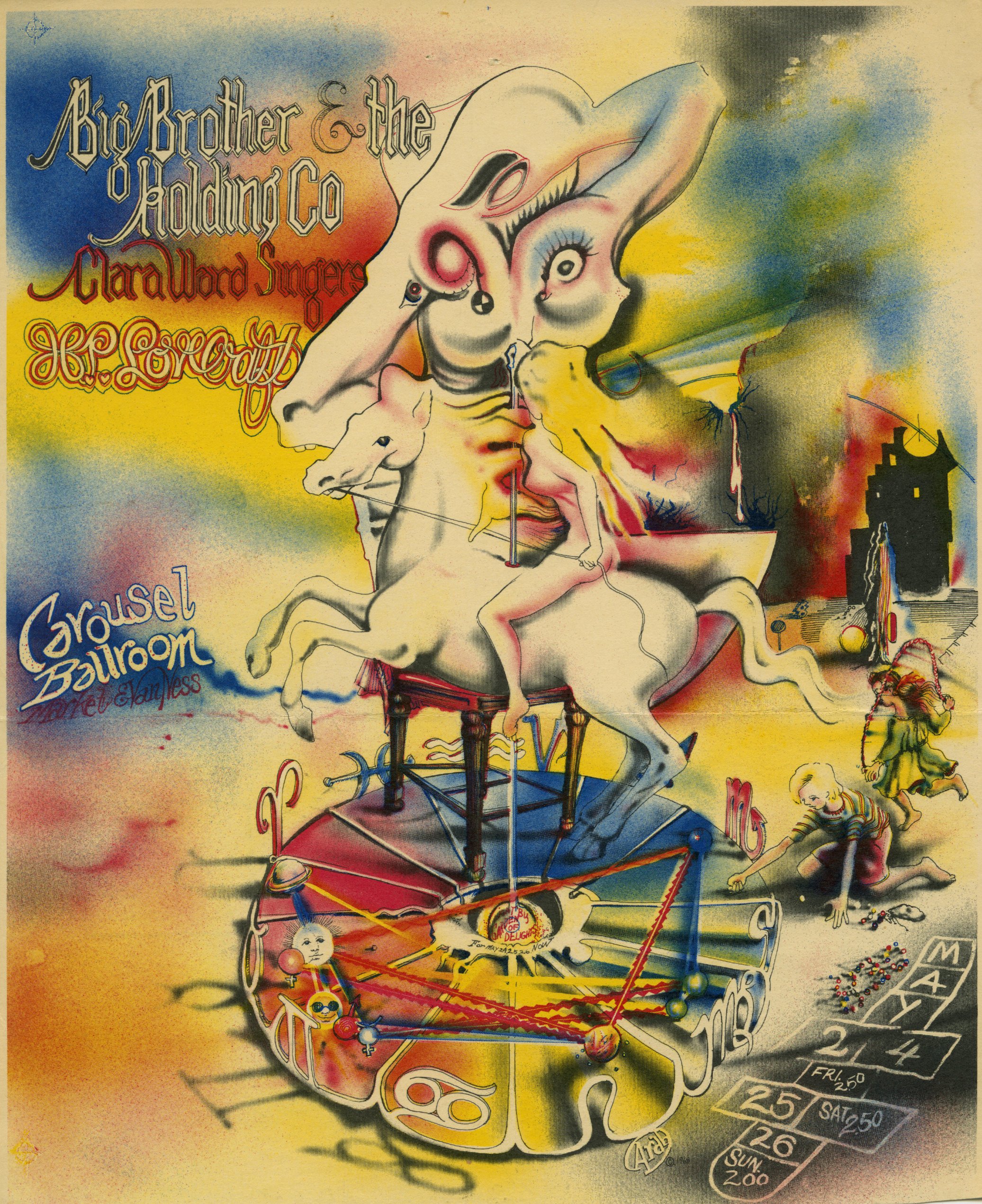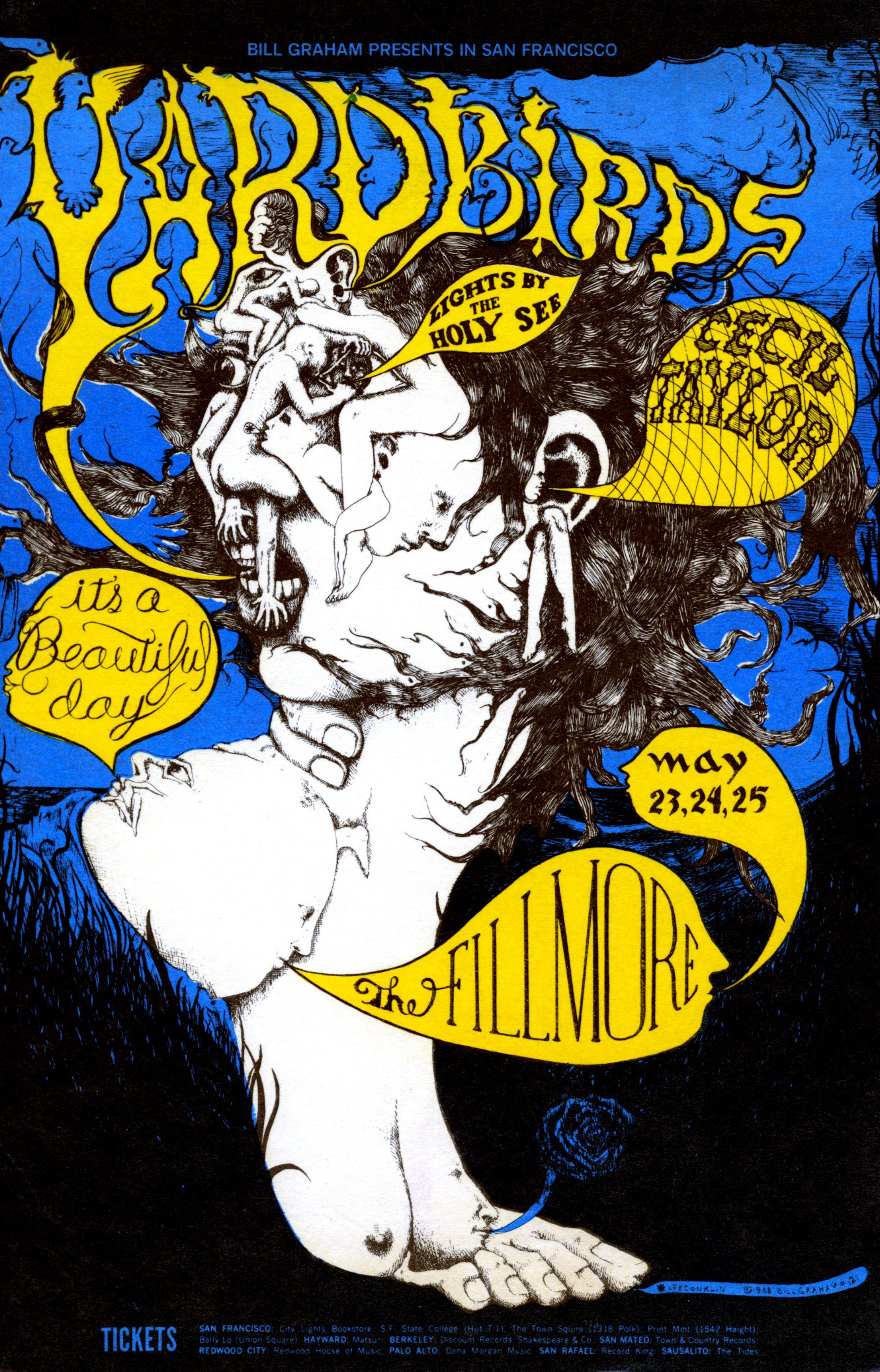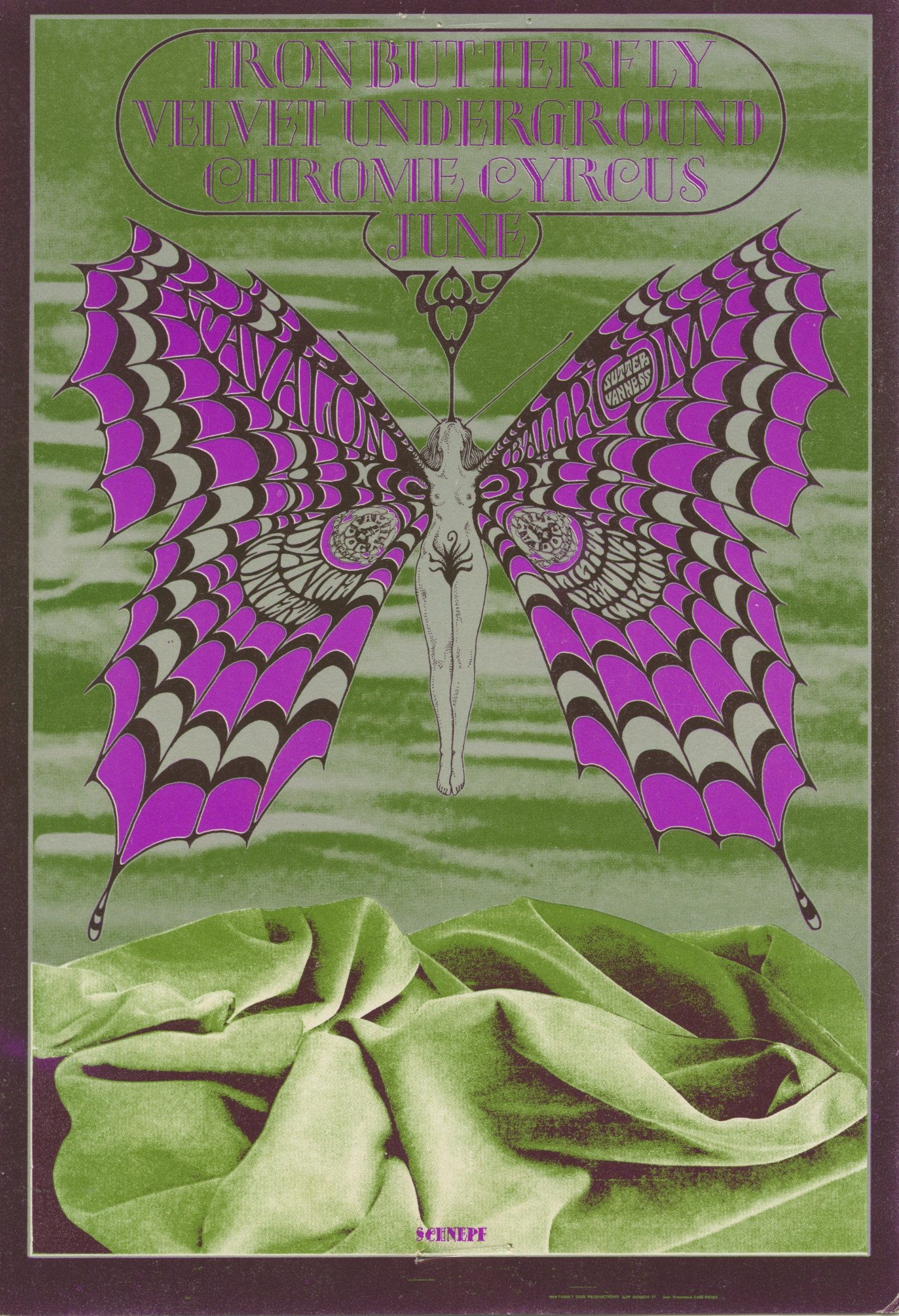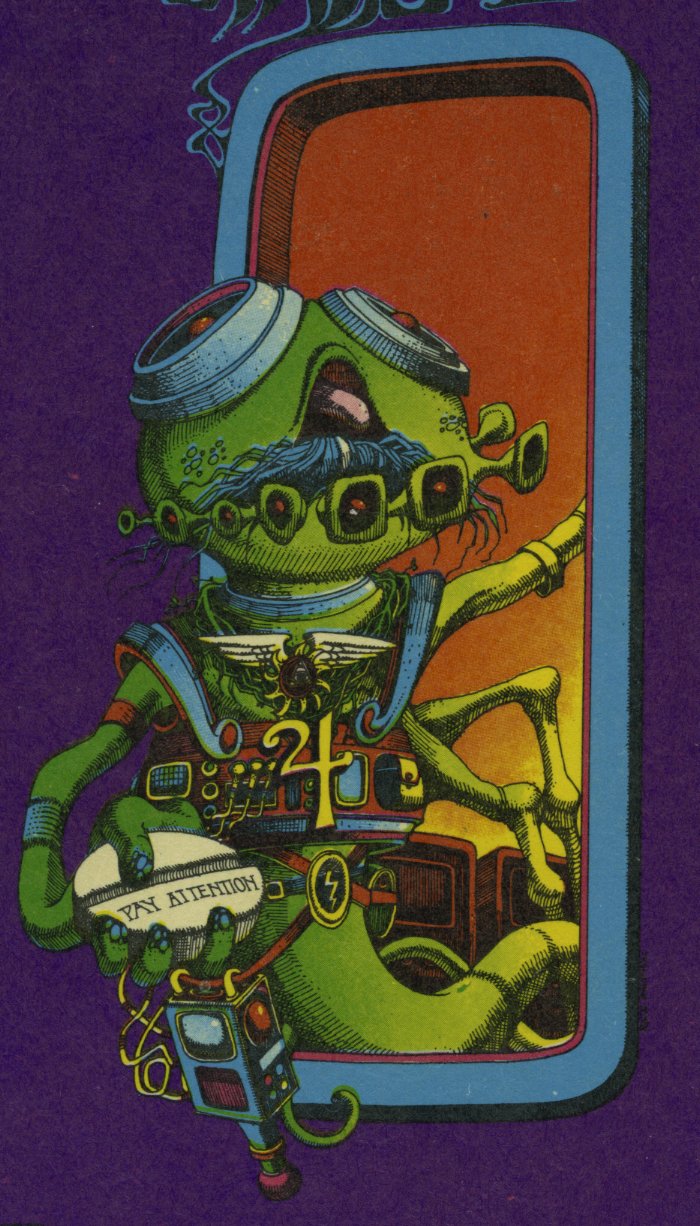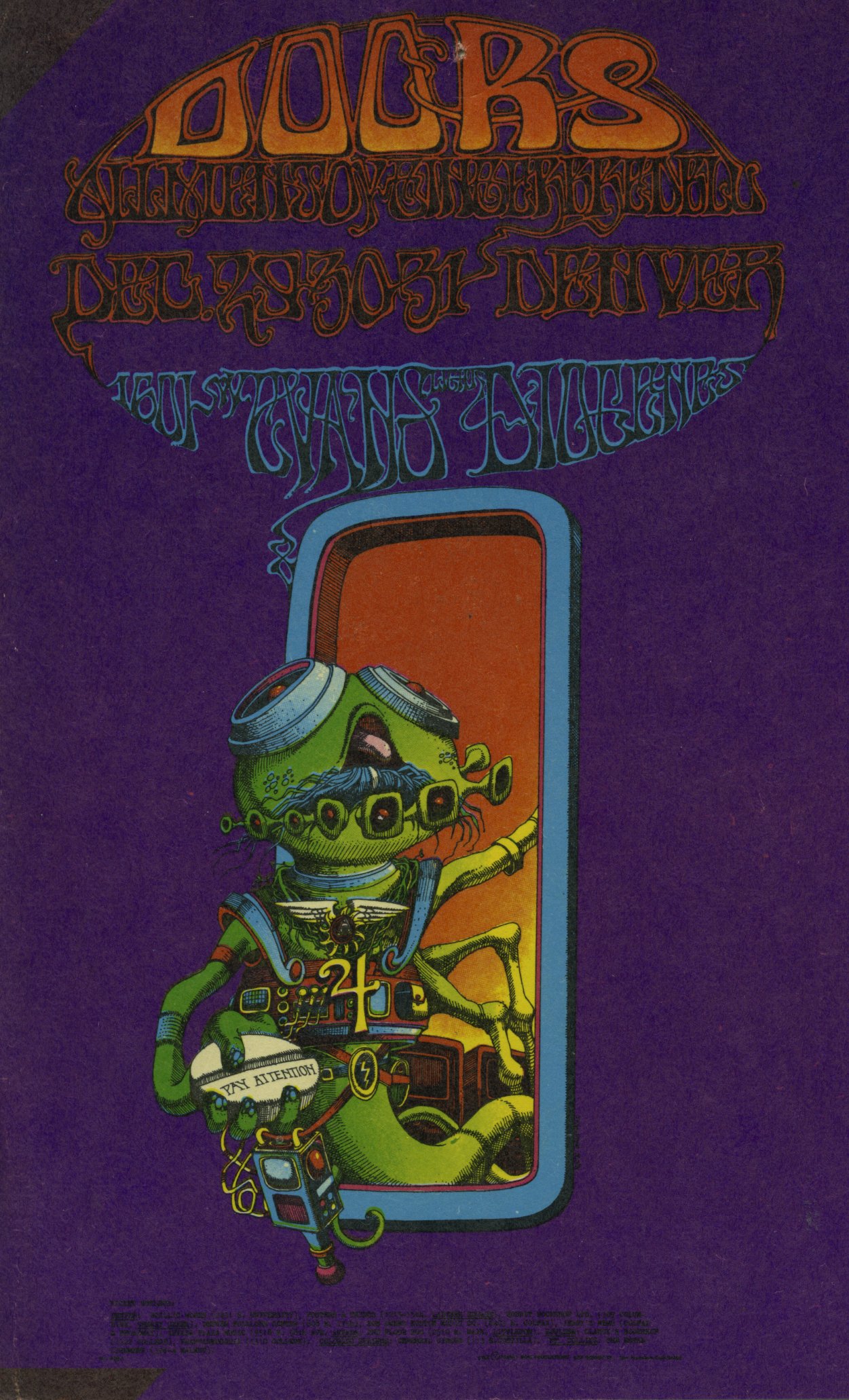Origins of Psychedelic Art
My last post about my Fillmore/Avalon/Winterland/Carousel handbill collection elicited a substantial response and request for more posters, so here are few that exemplify the era of psychedelic art.
Fallen Lichen - This fell on my shoulder during a violent winter storm while in residence at Djerassi. I took it as a call to action, and made this image which, at the time, reminded me of my inflamed neurology due to Lyme Disease.
Just as the ugliness of the Industrial revolution inspired the Art Nouveau movement, the 1960’s psychedelic craze was occasioned by the trauma of the war in Vietnam.
As for the origin of the word “psychedelic,” I understand it was an invention of a Canadian mental hospital superintendent Humphry Osmond, who, in his correspondence with Aldous Huxley, sought a language consistent with the experience that was beyond them. In a recent interview, Canadian medical historian and professor Erika Dyck said “In 1956, Huxley wrote to Osmond saying, ‘To make this trivial world sublime / take half a gram of phanerothyme.’ And Osmond wrote back saying: ‘To fathom Hell or soar angelic, just take a pinch of psychedelic.’ Less than a year later, he published in the New York Academy of Sciences, and it entered into the English lexicon.”
From his 1957 paper A review of the Clinical Effects of Psychotomimetic Agents:
“If mimicking mental illness were the main characteristic of these agents, "psychotomimetics" would indeed be a suitable generic term. It is true that they do so, but they do much more. Why are we always preoccupied with the pathological, the negative? Is health only the lack of sickness? Is good merely the absence of evil? Is pathology the only yardstick? Must we ape Freud's gloomier moods that persuaded him that a happy man is a self-deceiver evading the heartache for which there is no anodyne? Is not a child infinitely potential rather than polymorphously perverse?
I have tried to find an appropriate name for the agents under discussion: a name that will include the concepts of enriching the mind and enlarging the vision. Some possibilities are: psychephoric, mind-moving; psychehormic, mind-rousing; and psycheplastic, mind-molding. Psychezymic, mind-fermenting, is indeed appropriate. Psycherhexic, mind bursting forth, though difficult, is memorable. Psychelytic, mind-releasing, is satisfactory. My choice, because it is clear, euphonious, and uncontaminated by other associations, is psychedelic, mind-manifesting. One of these terms should serve.”
